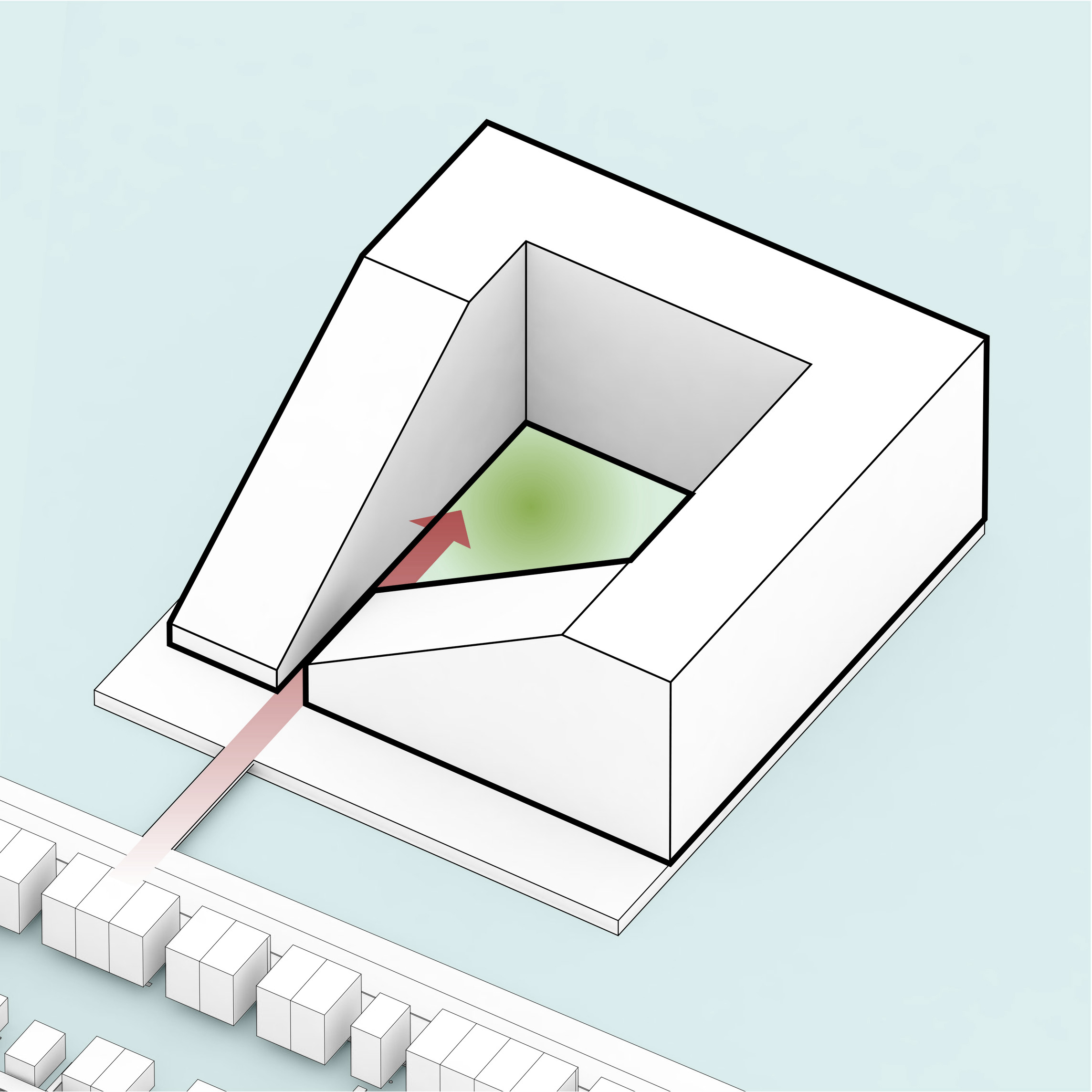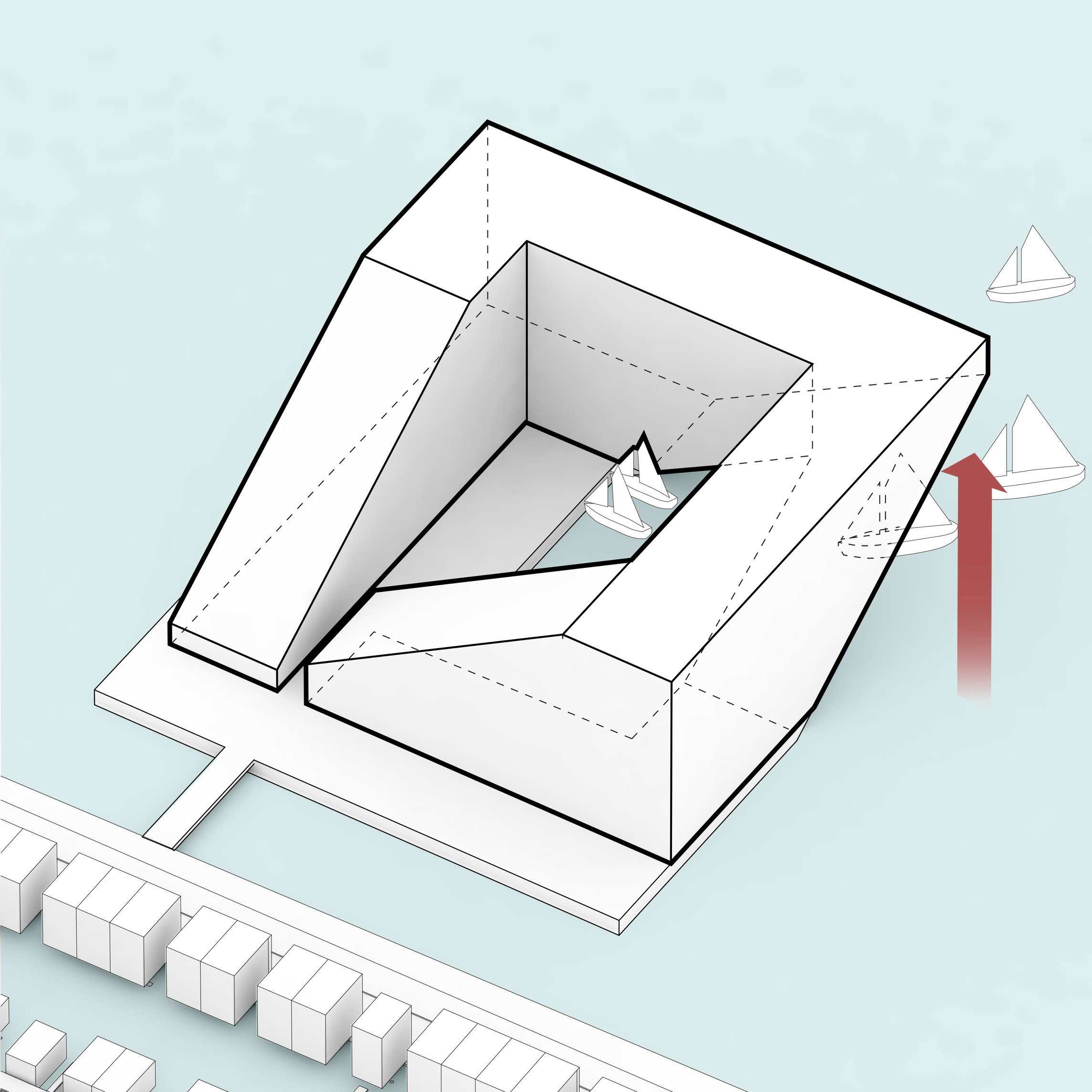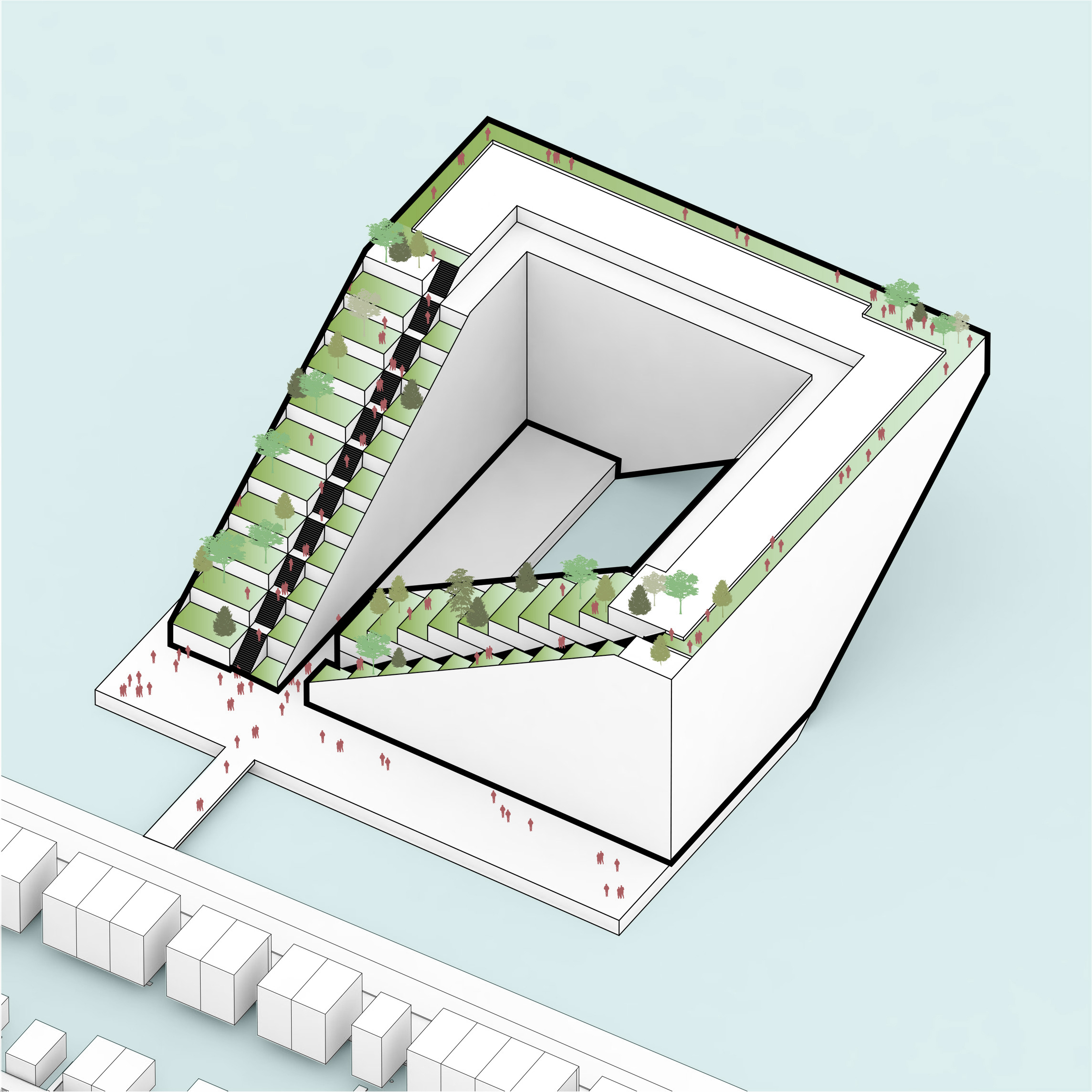STATUS
COMPLETED
AMSTERDAM, NETHERLANDS
CLIENT
BESIX | Vorm
TYPOLOGY
Residential
SIZE M2/FT2
40,000 / 376,740
STATUS
COMPLETED
SHARE
Located in Amsterdam’s neighborhood of IJburg Steigereiland, the 49,000 m2 ‘floating’ neighborhood with public roofscapes and river walks reinterprets the classic courtyard typology for life on the water.
Sluishuis brings 442 zero-energy owner-occupied and rented homes, a public rooftop garden and walkway, and a comprehensive water-quality program with space for up to 30 houseboats to the area.
Designed by BIG Landscape, the front sides and the inner harbor of the building feature gardens with local plant species. The greenery runs across the roof terraces up into integrated planters, which will create a vibrant green atmosphere at the ‘floating’ neighborhood over time.
Located between the dense city and the vast landscapes on the edge of Amsterdam, Sluishuis is shaped by its surroundings, at once close to large infrastructure and to small-scale urban communities.
A promenade with public programs winds around the building and continues into the water, forming an archipelago of islands for houseboats, a sailing school, and floating gardens.
The silhouette of Sluishuis changes as one moves around the building. At one vantage point it appears as the bow of a ship that reflects the water below; at another a vertical green community that invites visitors to engage directly with it; and finally, as a true urban block with street-access and city liveliness to be enjoyed by residents, neighbors, and the rest of Amsterdam.
"The world-famous urban environment of Amsterdam was created by the fusion of water and city. The new Sluishuis is born of the same DNA, merging water and perimeter block and expanding the possibilities for urban lifeforms around the IJ."
A classic courtyard building, Sluishuis fully embraces the idea of living on the water. Toward the water the block is lifted up, forming a large opening that brings water from the IJ Lake into the courtyard and brings daylight and views to the inner apartments of the building.
Toward the neighboring urban district, the block steps down like a cascade of landscaped terraces, creating a natural transition from cityscape to smaller-scale, natural surroundings. A public passage climbs the cascading terraces of the building, serving as a small rooftop street that eventually loops onto the very top of the building to create a viewing platform over the IJ Lake. The passage not only creates a destination for visitors and neighbors, but connects the residential units to each other, bringing a sense of community to the residents of the building.
"Having spent my formative years as an architect in Holland at the end of the 20th century, it feels like a homecoming to get to contribute to the architecture of the city that I have loved and admired for so long. Our Sluishuis is conceived as a city block of downtown Amsterdam floating in the IJ Lake, complete with all aspects of city life. Towards the city, the building kneels down to invite visitors to climb its roof and enjoy the panoramic view of the new neighborhoods on the IJ. Toward the water, Sluishuis rises from the river, opening a gigantic gate for boats to enter and dock in the port/yard. A building inside the port, with a port inside the building."
With an energy performance coefficient (EPC) of 0.00, Sluishuis generates more energy than it consumes. The building’s heating requirements are minimized by combining high-performance insulation techniques, triple glazing and heat recovery on the ventilation systems and wastewater. Energy consumption is further reduced by a heat and cold storage (CHS) system in the ground for heat and cooling in combination with a connection to the district heating system for peak times. The remaining energy consumption for heating, heat pumps, ventilation, and LED-lighting is fully compensated by approximately 2,200 m² of solar panels, to which an entire floating island adjacent to the project is dedicated.
Bjarke Ingels Finn Nørkjær Jakob Lange Andreas Klok Pedersen Alberto Menegazzo Alex Bogdan Ritivoi Anders Fønss Anna Bertolazzi Anna Odulinska Andrea Angelo Suardi Arielle Khosla Bart Ramakers Birgitte Villadsen Borko Nikolic Brage Hult Camille Breuil Christian Eugenius Kuczynski Daniel Ferrara Bilesky David Vega y Rojo Dimitrie Grigorescu Dina Brændstrup Dominika Trybe Duncan Horswill Filip Radu Frederikke Faas Frederik Skou Jensen Gokce Naz Tercioglu Helen Shuyang Chen Hessam Dadkhah Hongduo Zhou Jagoda Helena Lintowska Jan Magasanik Jean Valentiner Strandholt Jeppe Langer Jonas Aarsø Larsen Justyna Mydlak Katrine Sandstrøm Keuni Park Kim Christensen Kirsty Badenoch Kristoffer Negendahl Lasse Ryberg Hansen Liliana Cruz Lone Fenger Albrechtsen Louise Mould Luca Pileri Lyn Poon Mads Engaard Stidsen Mads Mathias Pedersen Manon Otto Martino Hutz Naoko Asano Olly Veugelers Santtu Johannes Hyvarinen Sascha Leth Rasmussen Sebastian Liszka Shengpeng Mao Simone van de Wiel Sze Ki Wong Tore Banke Ulla Hornsyld Victoria Ross-Thompson Vinish Sethi William Pattison Yannick Macken Yulong Li Yu Xun Zhang Nina Vuga Sherief Al Rifal Paola Yepes Bocanegra Mark Pitman
Design Educates Awards, Architectural Design, Silver, 2024 Architecture Master Prize: Architectural Design of the Year, 2023 MIPIM AWARDS, Best Residential Building, 2023 IPAX European Property Award Best Architecture Multiple Residence, 2022 IPAX European Property Award Best Residential Development 20+ Units, 2022 Architectenweb Residential Building of the Year, 2022
BARCODE Architects
VAN ROSUUM
Buro Bouwfysica
DWA Architects
Klimaatgarant B.V.



